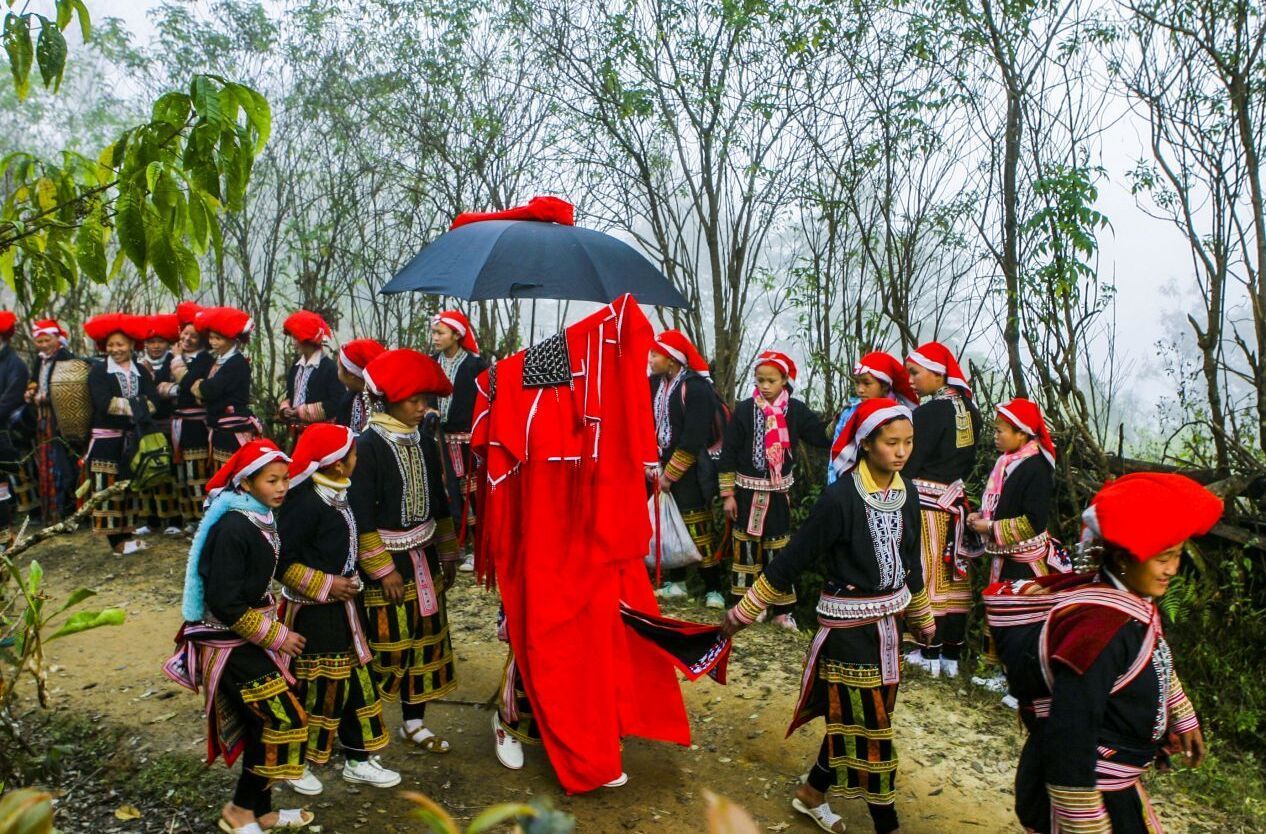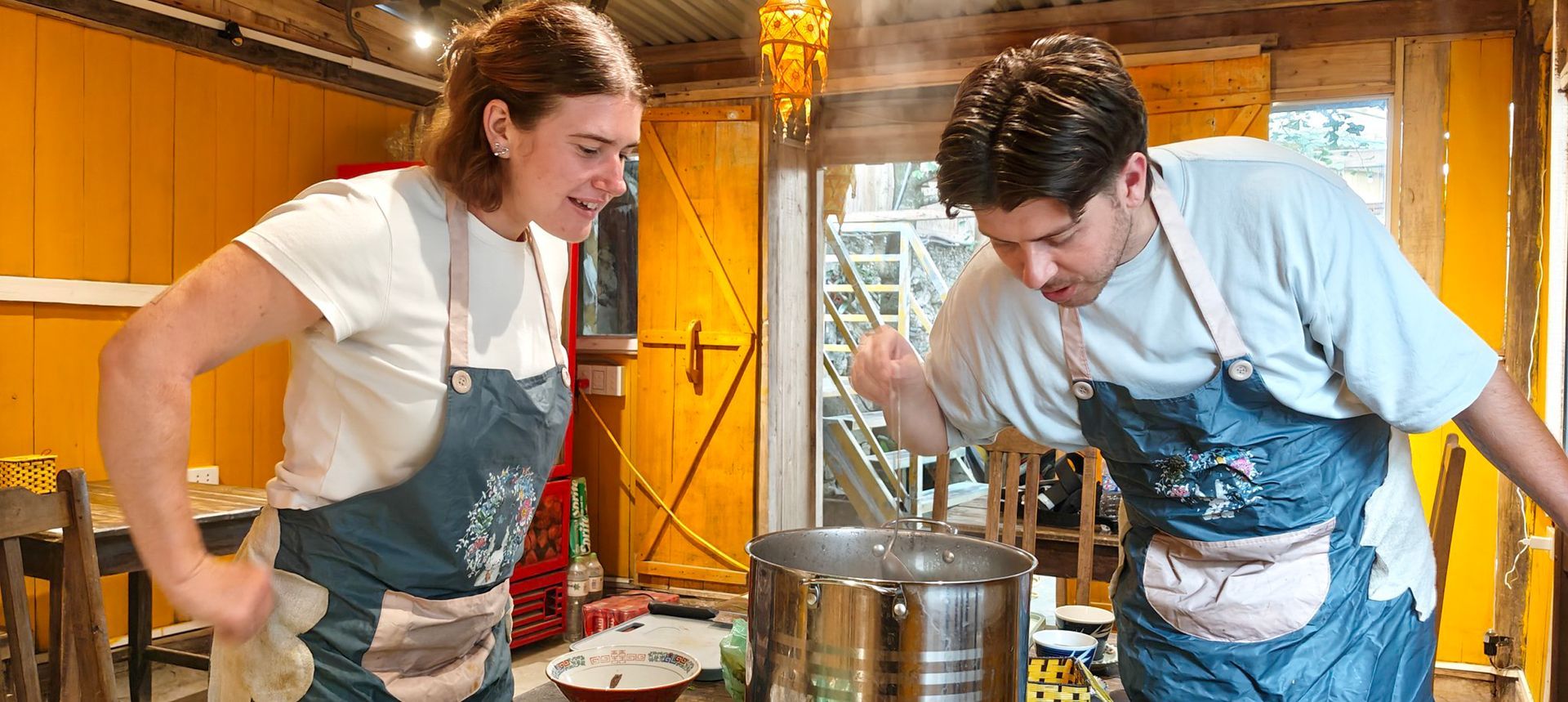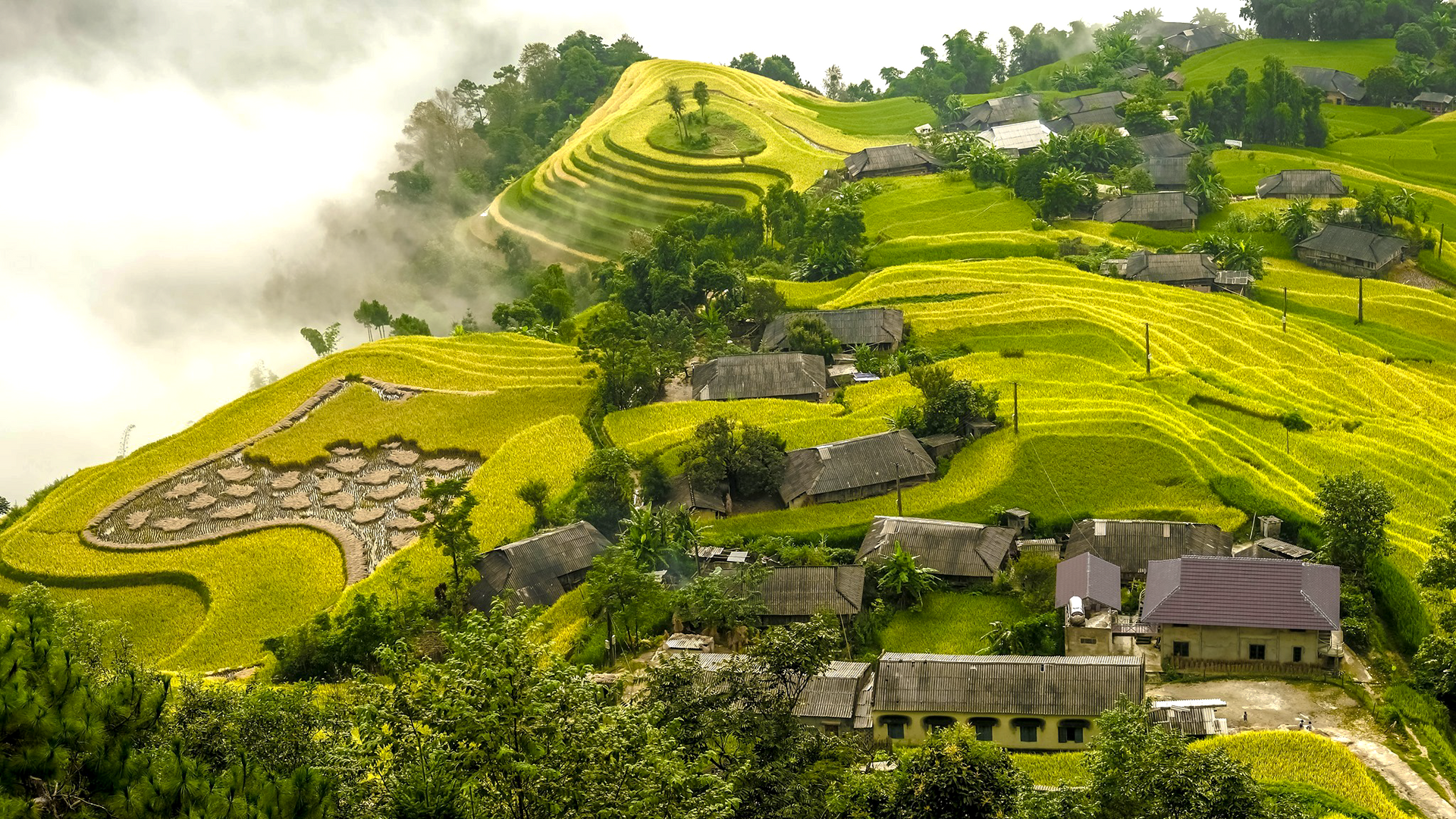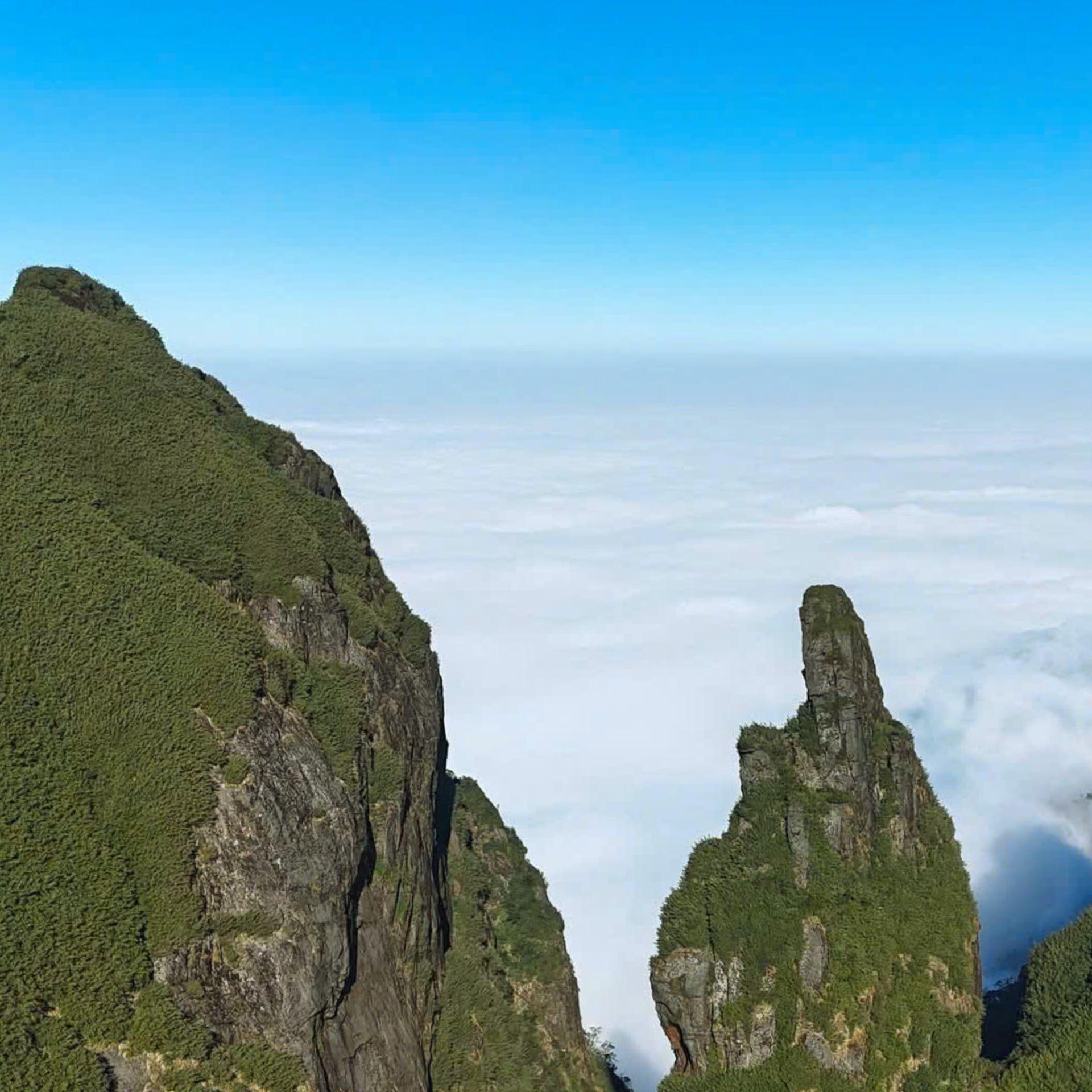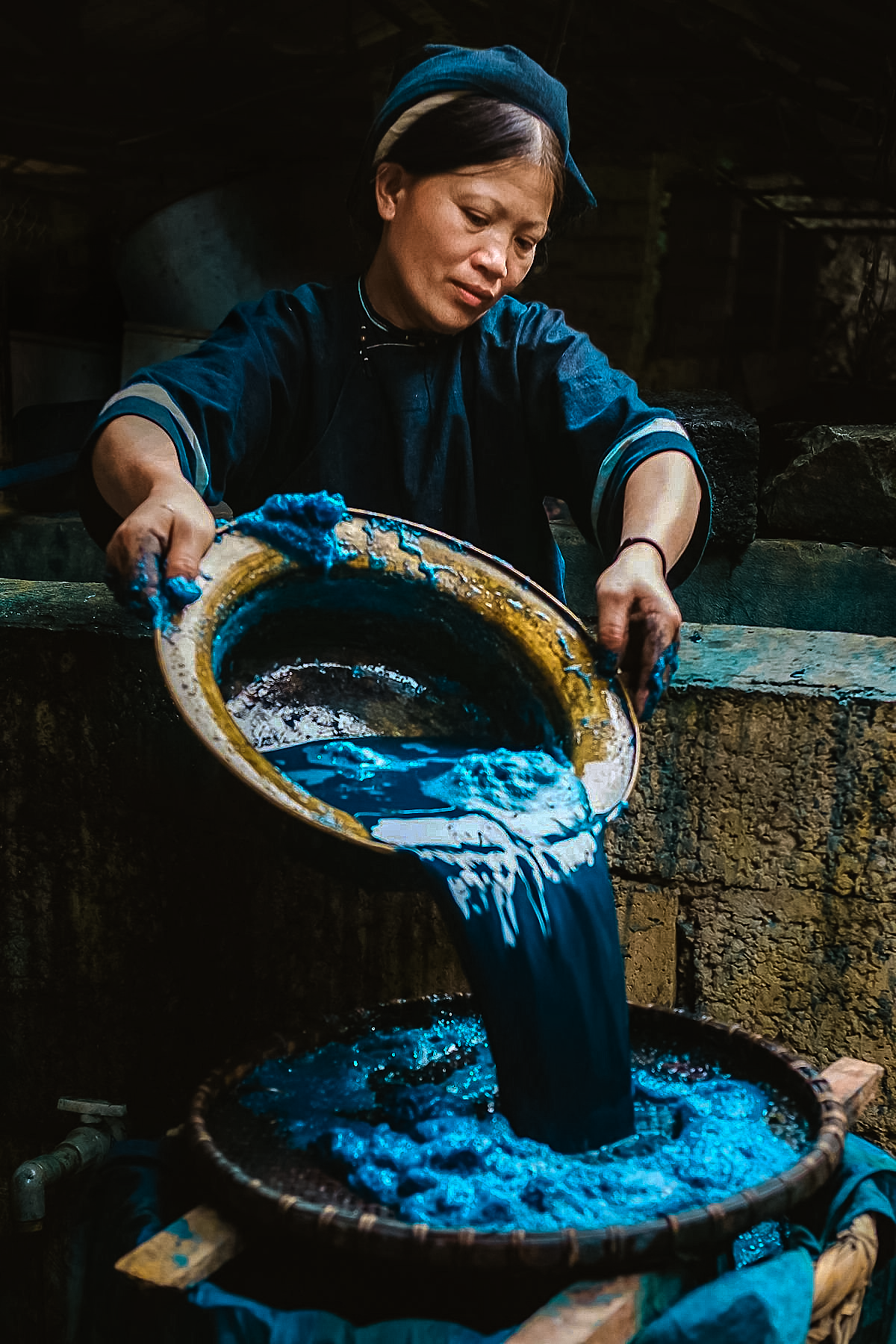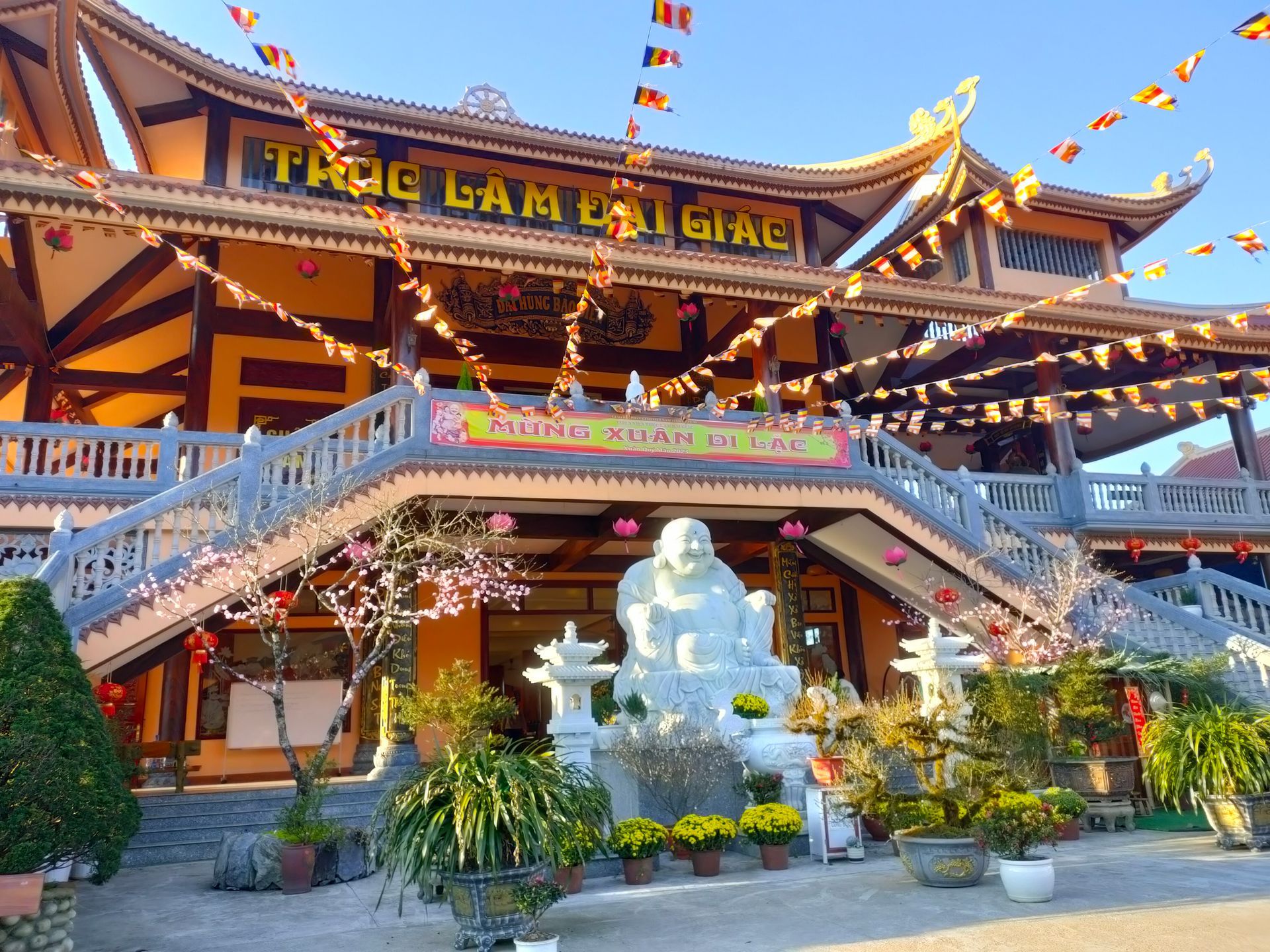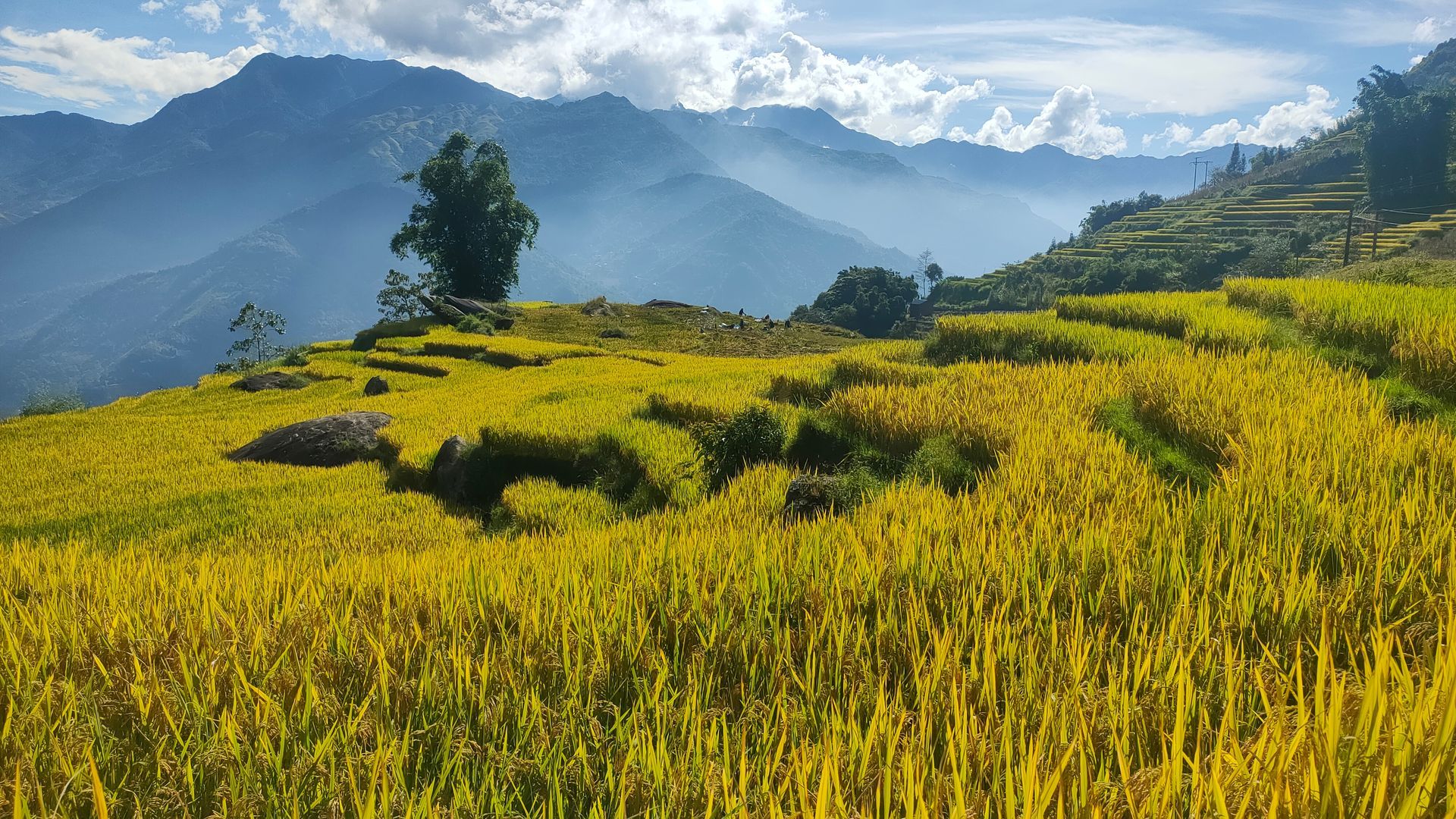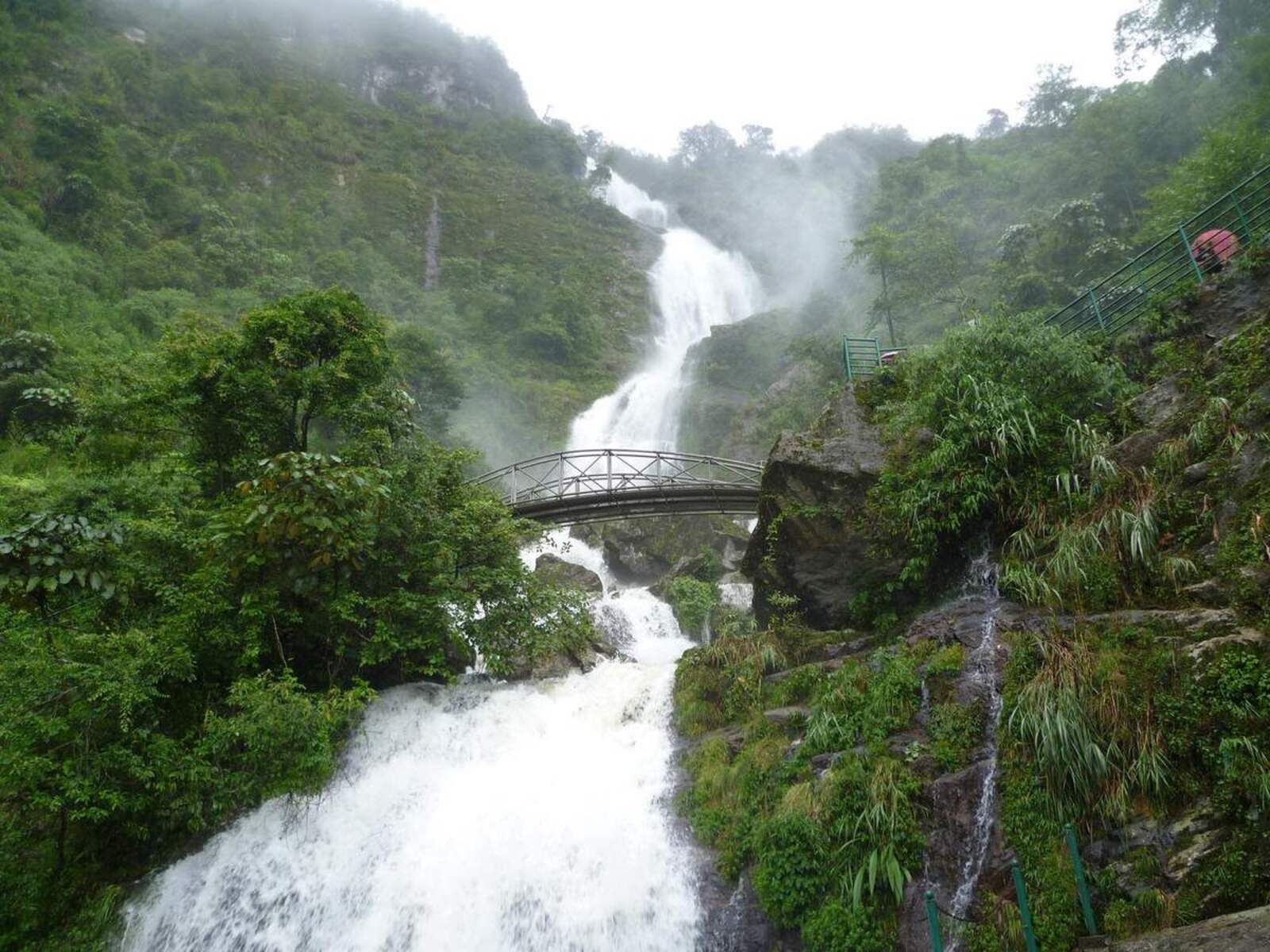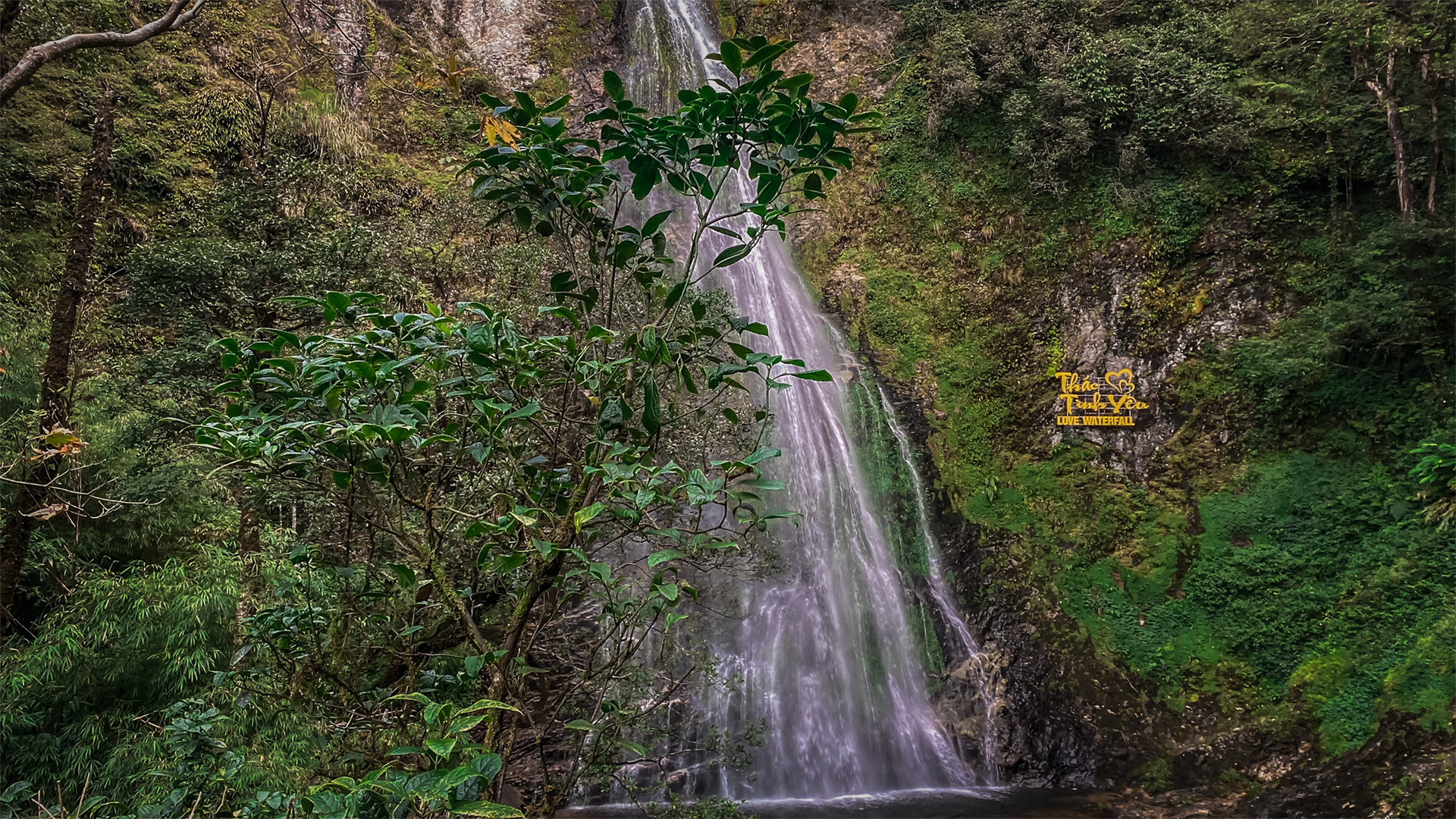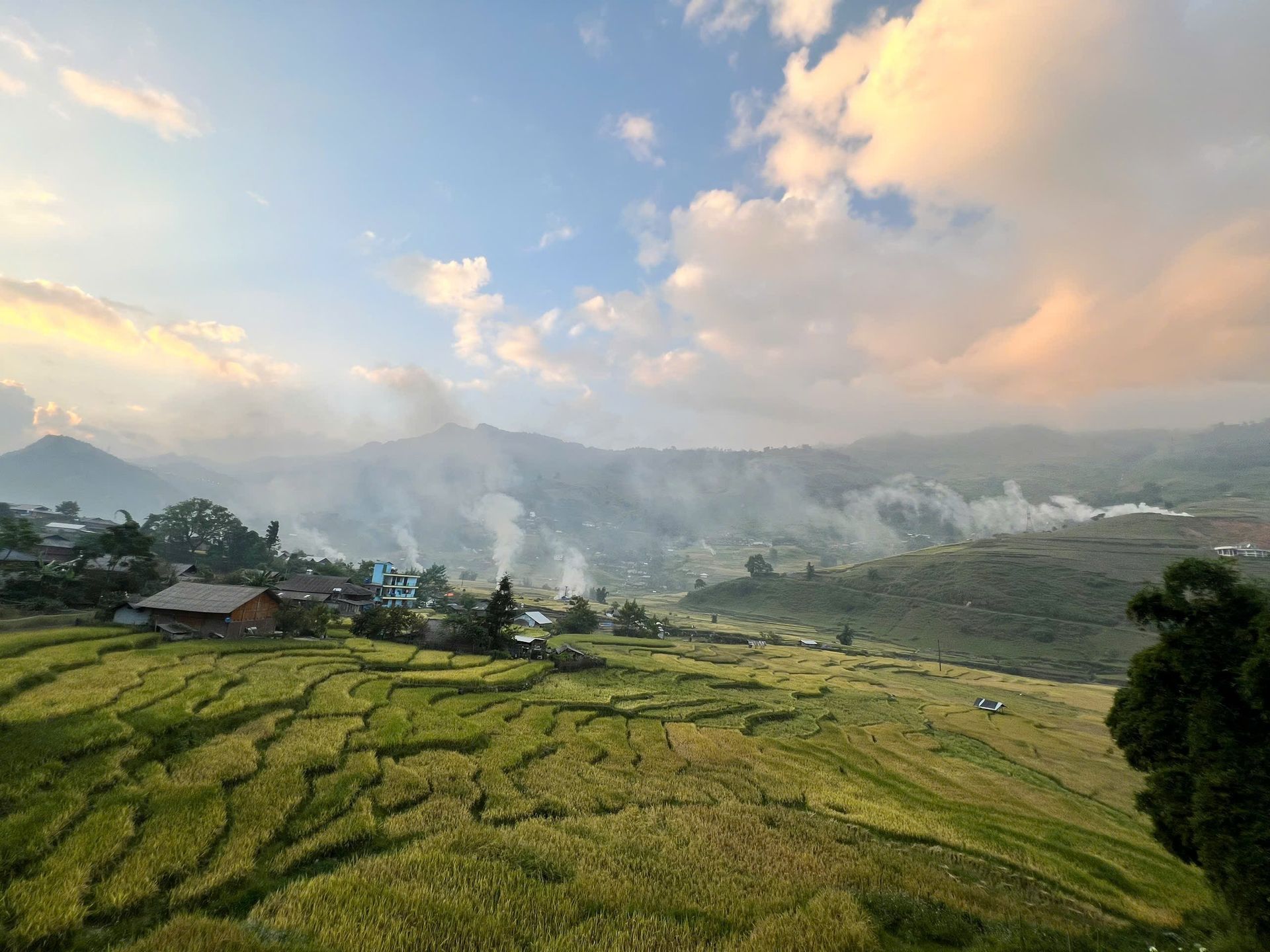In the heart of the Muong Hoa Valley, beneath the misty peaks of Sa Pa, lie clusters of ancient rock engravings—mysterious symbols, stylized human-figures, geometric motifs, and enigmatic patterns carved into boulders scattered across terraces. These stone canvases whisper of a time long ago, linking nature, belief, and human expression.
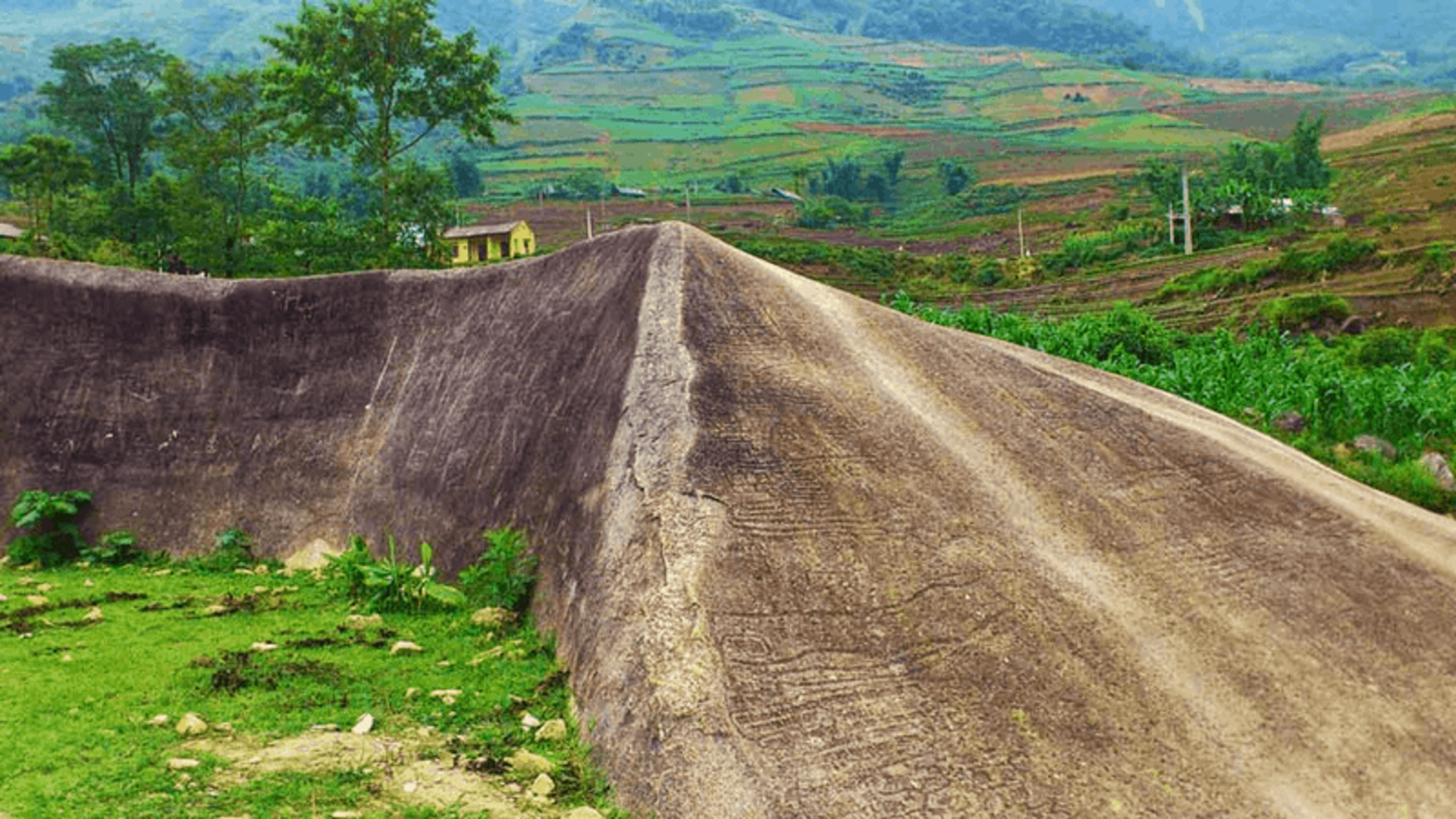
A Chronicle Begins: Goloubew’s Discovery
In 1925, the French–Russian archaeologist Victor Goloubew, working for the French École française d’Extrême-Orient, made the first systematic survey of these rock panels. What appeared at first glance as random carvings revealed, under his lens, a deliberate arrangement of motifs and directions.
Goloubew observed that many carvings were oriented toward the southeast—the direction of water flow and valley alignment. He proposed that the engravings formed a symbolic pyramid-like layout, integrated with the broader landscape of terraces, paths, and streams.
He further linked the motifs to artifacts in Vietnamese culture: the stylized human figures echoing designs on Đông Sơn drums, the “frog–person” posture reflecting regional ritual symbols, as well as parallels in Dao, Thai, and Lolo ethnic textile and metalwork.
Goloubew speculated these carvings might represent magical or cosmological symbolism. They posed a challenge: how to interpret archaic belief systems through stone.
Context & Comparisons: Rock Art Beyond Sa Pa
Similar murals have been found across southern China near the Vietnamese border. In Guangxi’s Ninh Minh, for instance, the Hoa rock paintings—covering nearly 4,000 m² with over 1,900 individual motifs—are recognized by UNESCO and date between the 5th century BCE and 2nd century CE.
These similarities—technique, iconography, materials—suggest shared cultural lineage between the rock art in Vietnam’s Muong Hoa Valley and those across the border, pointing to the ancient Lạc Việt civilization that once spanned this region.
The figures in the Chinese sites often depict ritual gatherings: singing, dancing, instruments, animals, and boats—echoing themes seen in Đông Sơn tradition.
Interpreting the Carvings: Symbolism & Belief
1. The “Frog-Person” Posture
A dominant motif is that of humans in a posture reminiscent of frogs — legs bent, arms raised or splayed. This is often linked to amphibian totems, rain-making rituals, and fertility symbolism. Within Đông Sơn culture, frog imagery on late Đông Sơn drums suggests rain-deity worship, and the frog may have served as a mediator between heaven and earth.
2. Sun Rays, Spirals & Geometry
Some human-figures carry radial limbs or “rays,” akin to sun symbolism. Spirals, zigzags, and concentric circles evoke cosmic representations—celestial bodies, cyclical time, or water movement.
3. Orientation & Spatial Logic
The deliberate alignment of panels toward the southeast may link the carvings to water, sun, or ancestral paths. The panels’ relationship with terraces, rivers, and pathways hints at a ritual geography: humans marking nodes of power in nature.
4. Layered Authorship
Though the original creators likely belonged to proto–Lạc Việt communities, later groups (e.g. Mông, Dao) may have added more carvings. Thus, what we see today could be palimpsests—multiple strata of belief and expression layered across time.
Visiting the Rock Engravings: A Guide
▪ Getting There
Most rock clusters are located along the Muong Hoa Valley, accessible via trails from Sa Pa town. A guided trek is recommended—local guides know subtle sites hidden among terraced fields or forested slopes.
▪ What to Bring / What to Look For
Good walking shoes, sun hat, rain jacket
A camera with macro/lens for close-up detail
Respectful behavior—no chiseling, touching, or marking
Look for carvings on sloping boulders, crevices, or near water
▪ Suggested Route & Tips
Start from lower terraces along the stream, gradually ascending. Pause to let your eyes adapt to surfaces under shadow or moss. Early morning or late afternoon light gives better contrast on carvings. Ask your guide about local folk stories or legends—these often preserve symbolic echoes of the ancient art.
Why It Matters
These engravings are not mere curiosities—they are portals to ancient belief, language, and cosmology. In absence of written records, they offer rare visual testimony of how early people in the highlands perceived and engaged with the world. They tie together the natural landscape, ritual space, and the human impulse to memorialize.
As tourism grows, protecting these fragile panels is crucial. Awareness, respectful visitation, and community engagement are key to preserving them for future generations.
Conclusion
Sa Pa’s rock engravings are silent narrators of a human past deeply woven into the valleys, rivers, and skies. If you visit, tread gently, see closely, and let the stones speak.
FOR INQUIRIES AND BOOKING:
Vietnam’s Ethnics Community
Address: 02 Nguyen Chi Thanh, Sa Pa, Lao Cai
Email: booking@ethnicscommunity.com
Whatsapp/Zalo/Phone: +84 944 824 131 | +84 989 454 334
